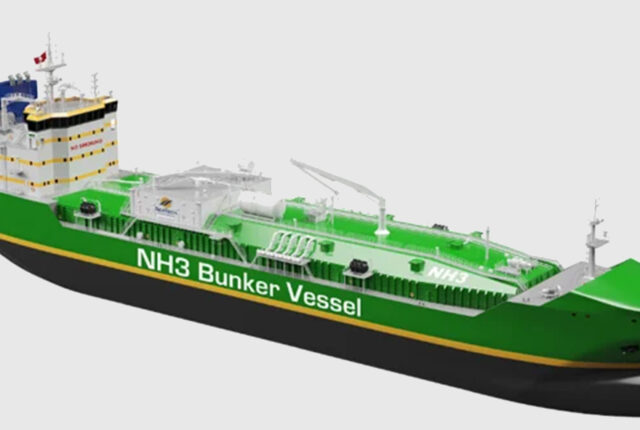
Sustainable Shipping: How Sea Freight Is Going Green
The shipping industry, often regarded as the lifeblood of international trade, has long been associated with environmental challenges. Massive cargo vessels, fueled by conventional marine fuels, have been responsible for significant greenhouse gas emissions and other ecological impacts. However, in recent years, the sea freight industry has made substantial strides toward embracing sustainability, introducing innovative practices and adopting eco-friendly solutions.
Sustainable Shipping: How Sea Freight Is Going Green
The journey towards sustainable shipping is a multifaceted one, encompassing a wide range of strategies, technologies, and initiatives. Let’s embark on this voyage to understand how sea freight is becoming an eco-friendly mode of transportation.
The Green Evolution of Sea Freight
In this section, we will explore the evolution of sea freight towards sustainability, highlighting key milestones and initiatives.
The Transition to Clean Fuels
One of the most significant steps in sustainable shipping has been the shift towards clean fuels. Traditional marine fuels, such as heavy oil and diesel, are notorious for their high sulfur content and harmful emissions. The industry is now turning to cleaner alternatives, including liquefied natural gas (LNG) and hydrogen fuel cells, to power ships.
Energy-Efficient Design
Modern vessels are being designed with energy efficiency in mind. Innovations in hull design, propulsion systems, and onboard technologies are reducing fuel consumption and carbon footprints. These advancements not only benefit the environment but also translate into cost savings for shipping companies.
Renewable Energy Integration
Embracing renewable energy sources is another game-changer for sea freight. Solar panels, wind turbines, and even kite propulsion systems are being integrated into ships to harness clean energy from nature. These innovations are reducing the reliance on fossil fuels during voyages.
Eco-Friendly Cargo Handling
Efficient cargo handling is essential for sustainable shipping. This section will delve into practices and technologies aimed at minimizing the environmental impact of cargo operations.
Smart Port Solutions
Ports play a pivotal role in the shipping process. Smart port solutions, utilizing digital technology and automation, are streamlining operations, optimizing logistics, and reducing congestion. This not only enhances efficiency but also reduces emissions associated with idle vessels.
Containerization and Intermodal Transportation
Containerization has revolutionized the shipping industry. Standardized containers not only make loading and unloading more efficient but also enable seamless intermodal transportation, where cargo seamlessly transitions from ship to truck or train. This approach minimizes handling and energy consumption.
Eco-Friendly Packaging
Sustainability extends to the cargo itself. Companies are increasingly adopting eco-friendly packaging materials and practices to reduce waste and minimize their environmental footprint. From biodegradable materials to reusable packaging, innovative solutions are emerging.
Environmental Regulations and Compliance
To ensure sustainable shipping, international bodies and governments are implementing stringent regulations. Understanding and adhering to these regulations is crucial for the industry’s green transition.
IMO’s Sulphur Cap
The International Maritime Organization (IMO) has implemented a global sulfur cap, limiting the sulfur content in marine fuels. This regulation, known as IMO 2020, aims to reduce sulfur dioxide emissions, which contribute to air pollution and acid rain.
Emission Control Areas (ECAs)
Emission Control Areas are designated regions with strict emission standards. Ships operating within ECAs must use cleaner fuels or employ emission-reducing technologies, further promoting sustainable shipping practices.
Sustainable Shipping: How Sea Freight Is Going Green
Let’s dive deeper into some specific initiatives and technologies that are propelling the maritime industry towards sustainability.
The Role of Artificial Intelligence
Artificial intelligence (AI) is making waves in the shipping industry. AI-powered systems analyze data to optimize routes, reduce fuel consumption, and enhance safety. These technologies not only improve efficiency but also contribute to greener operations.
Green Ports and Shore Power
Ports are critical hubs in the shipping process. Green ports are adopting renewable energy sources and providing shore power for vessels at berth, reducing the need for onboard generators and minimizing emissions during port stays.
FAQs (Frequently Asked Questions)
- Q: What is sustainable shipping? A: Sustainable shipping refers to environmentally responsible practices and technologies adopted by the maritime industry to reduce its ecological footprint.
- Q: How do ships reduce emissions? A: Ships reduce emissions by using clean fuels, improving energy efficiency, and adopting technologies like wind-assisted propulsion.
- Q: What is the role of renewable energy in sea freight? A: Renewable energy sources, such as solar and wind power, are integrated into ships to reduce reliance on fossil fuels and lower emissions.
- Q: How do smart ports contribute to sustainability? A: Smart ports enhance efficiency, reduce idle times, and minimize emissions by optimizing cargo operations and logistics.
- Q: What is the IMO’s Sulphur Cap? A: The IMO’s Sulphur Cap is a global regulation limiting the sulfur content in marine fuels to reduce air pollution from ships.
- Q: How can I support sustainable shipping as a consumer? A: Consumers can support sustainable shipping by choosing products from companies committed to eco-friendly transportation and reducing unnecessary packaging.
Conclusion
Sustainable shipping is no longer a distant dream; it’s a reality that’s shaping the future of Sea freight. From clean fuels and energy-efficient designs to eco-friendly cargo handling and regulatory compliance, the maritime industry is taking giant strides toward a greener and more sustainable future. As consumers, businesses, and policymakers come together to support these initiatives, we can look forward to a maritime industry that not only facilitates global trade but also preserves our planet for generations to come.






